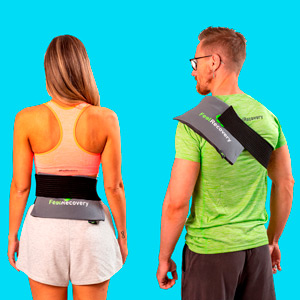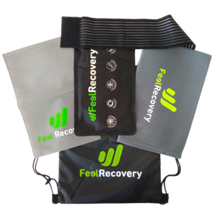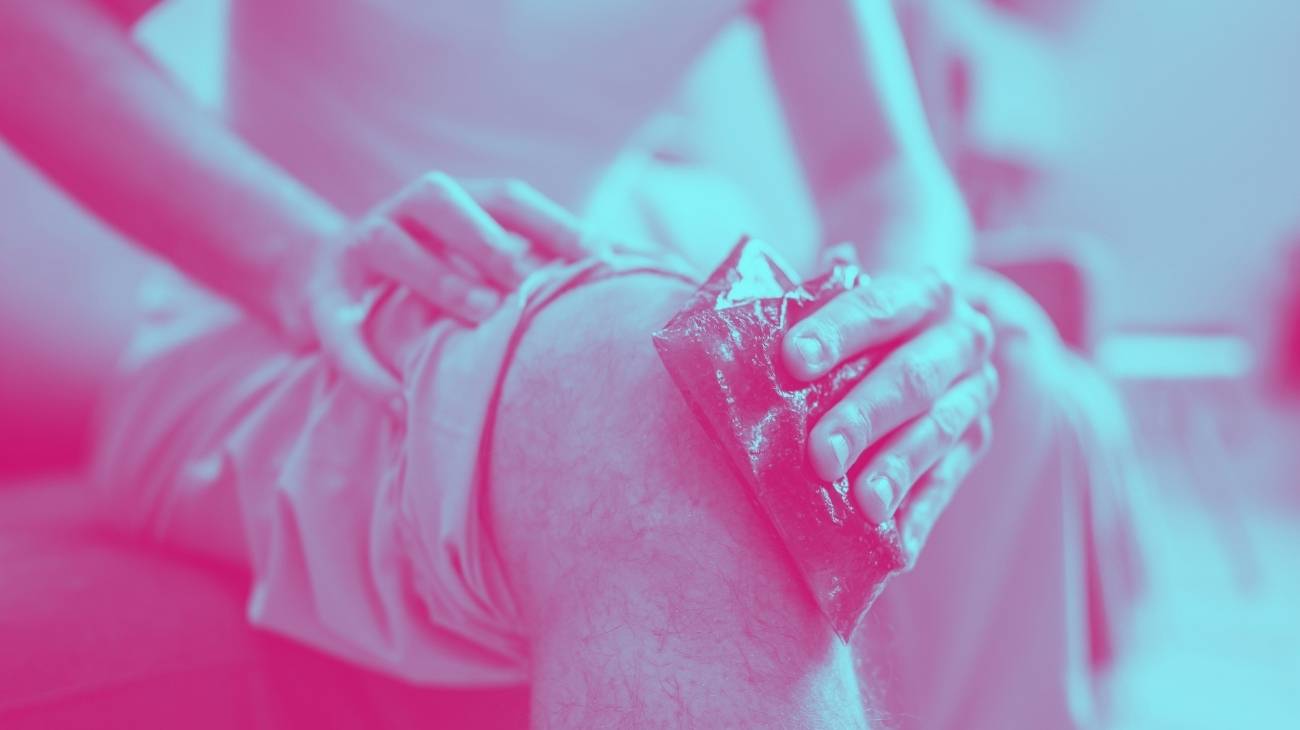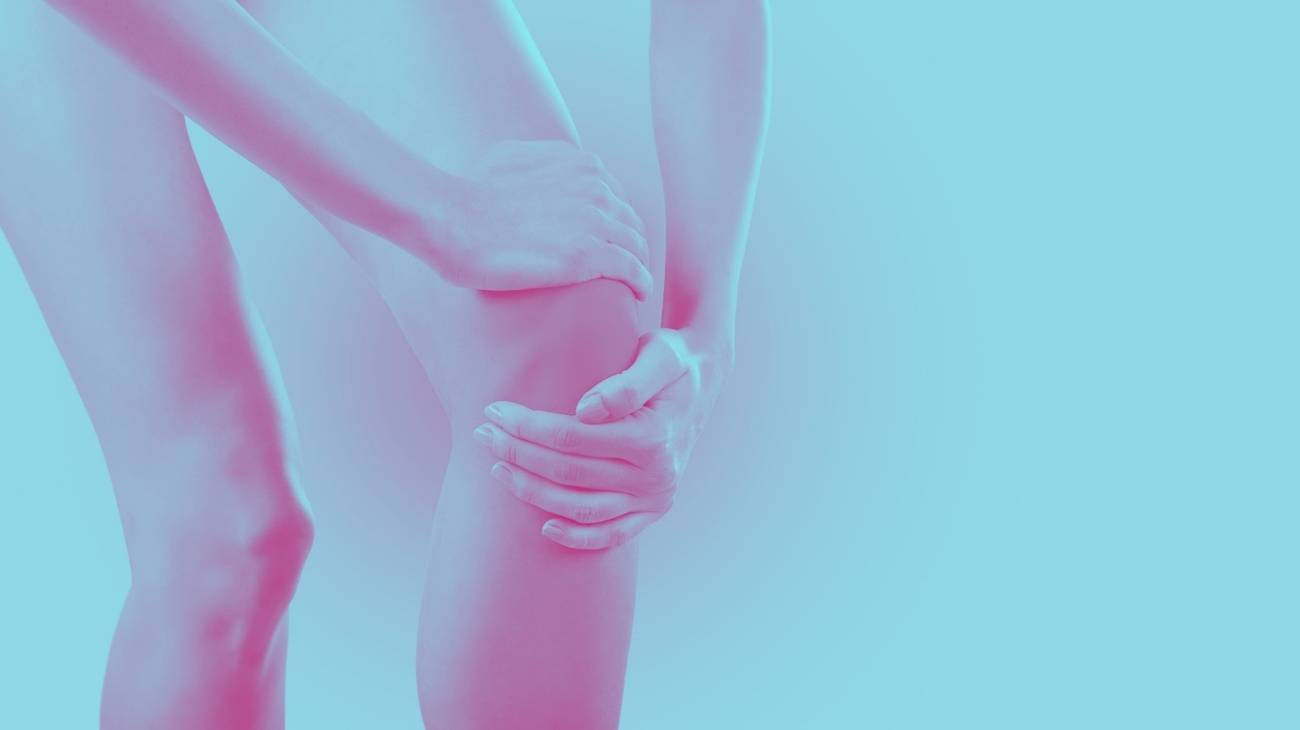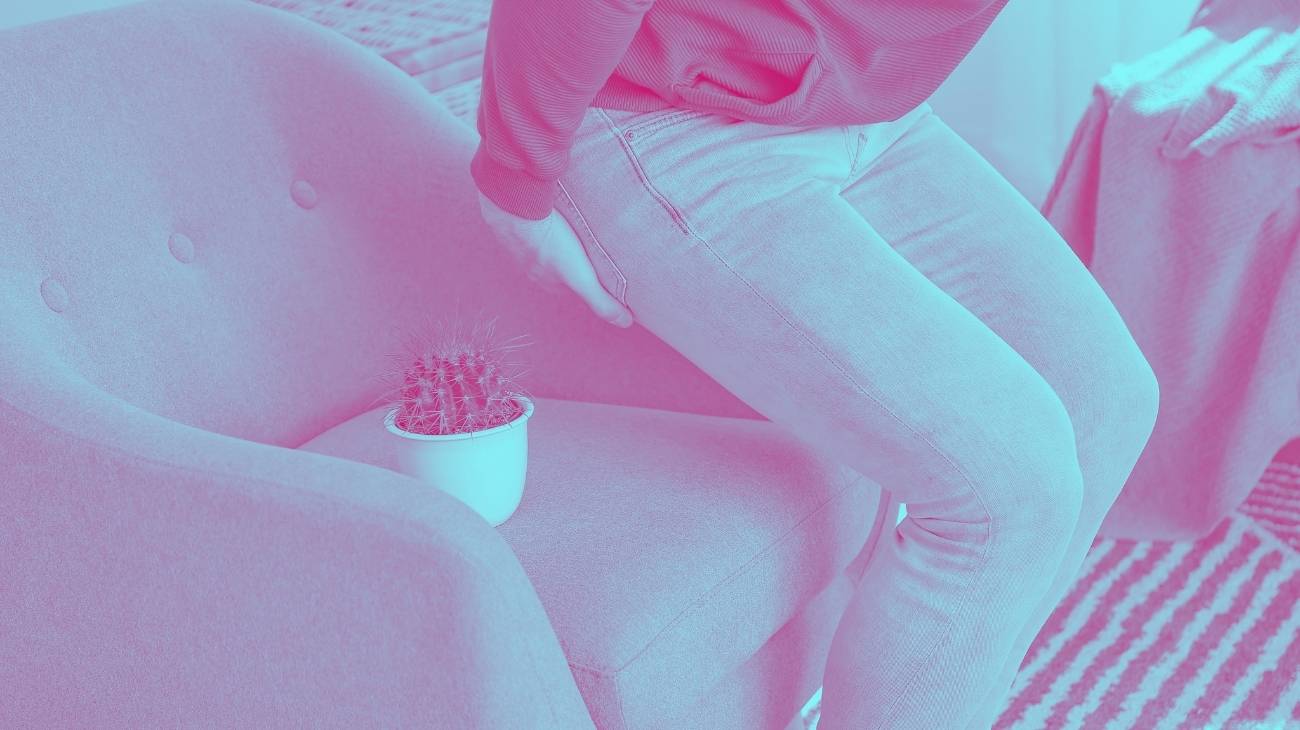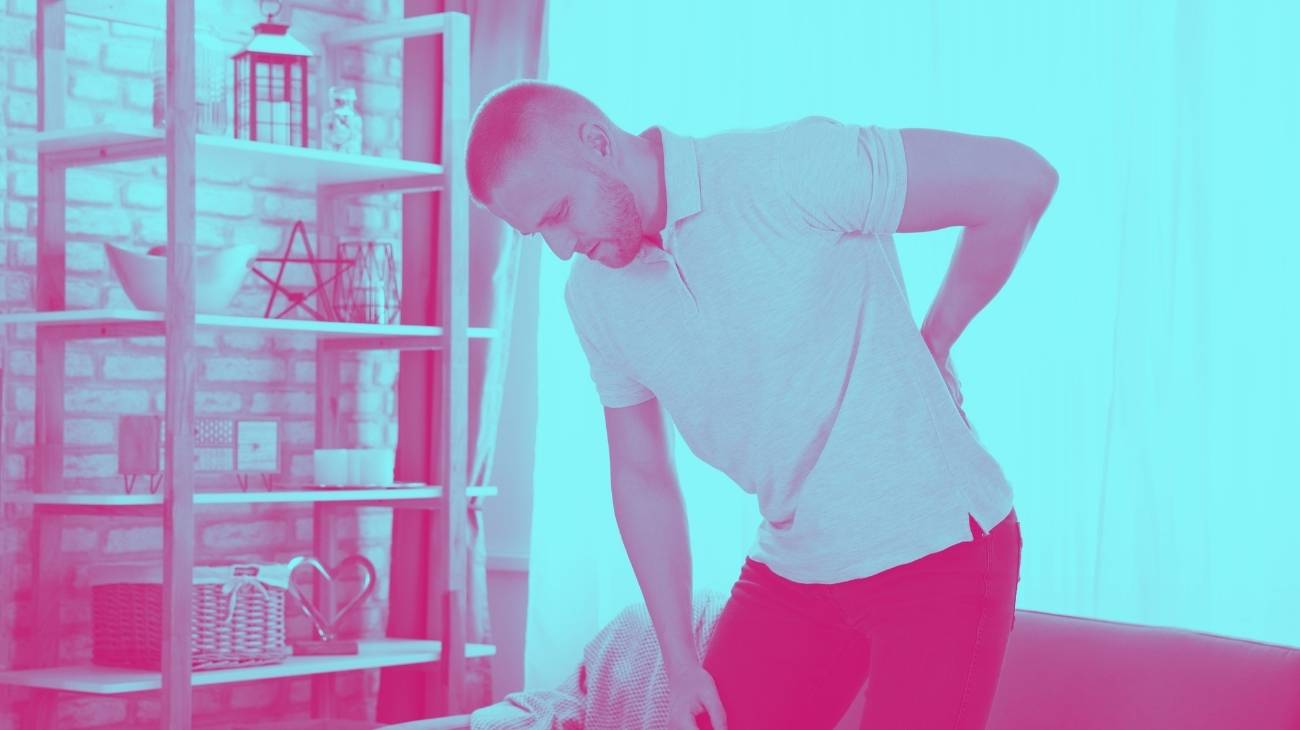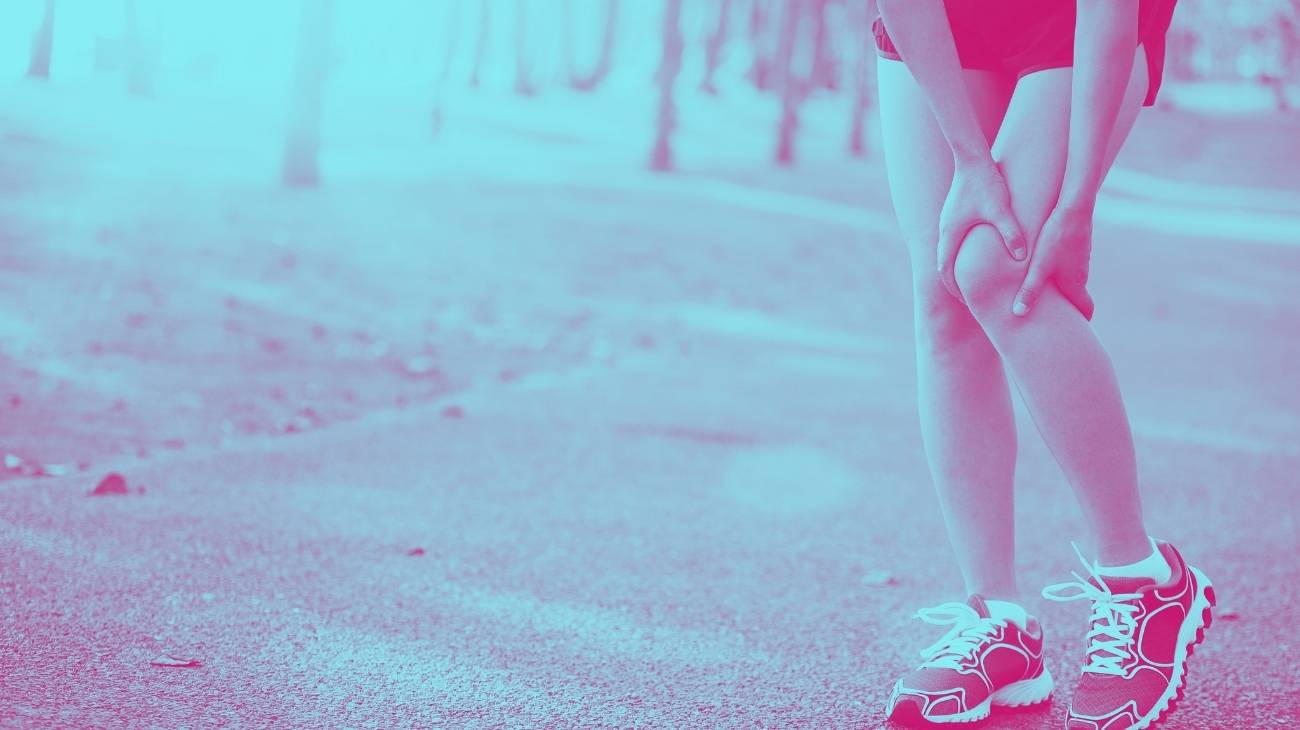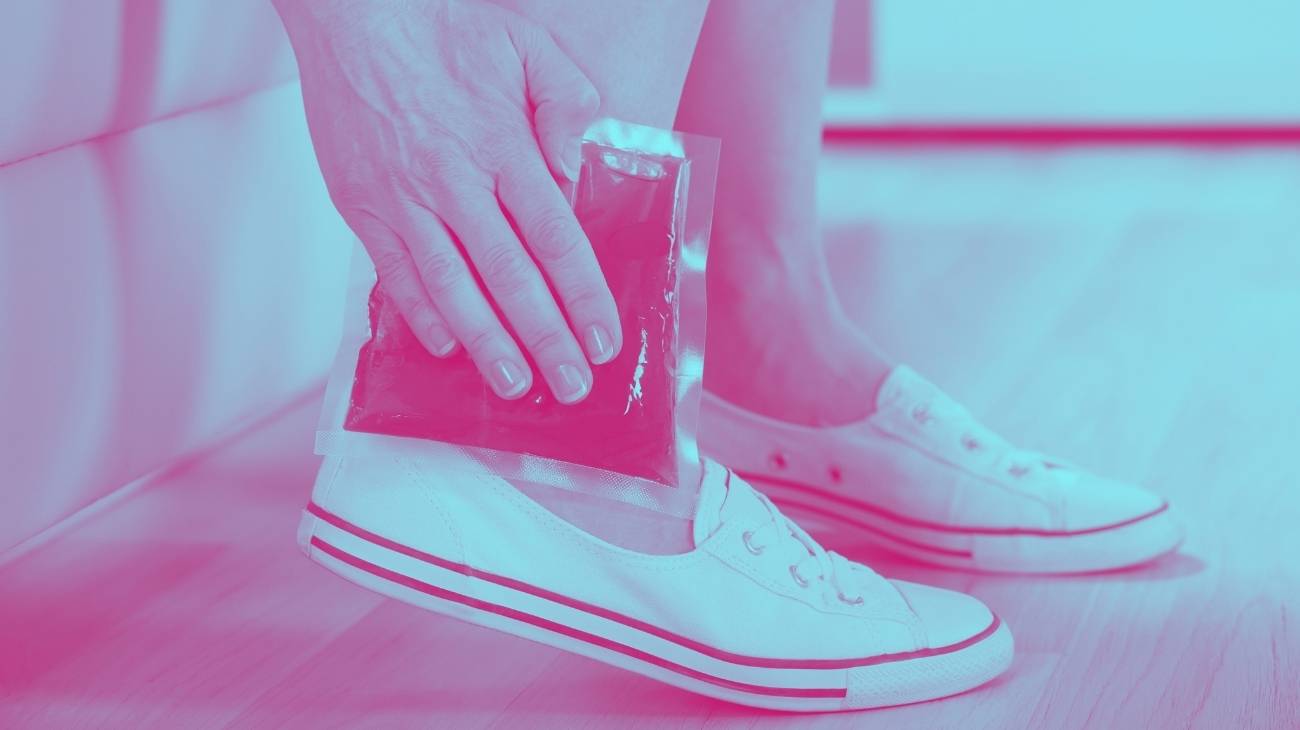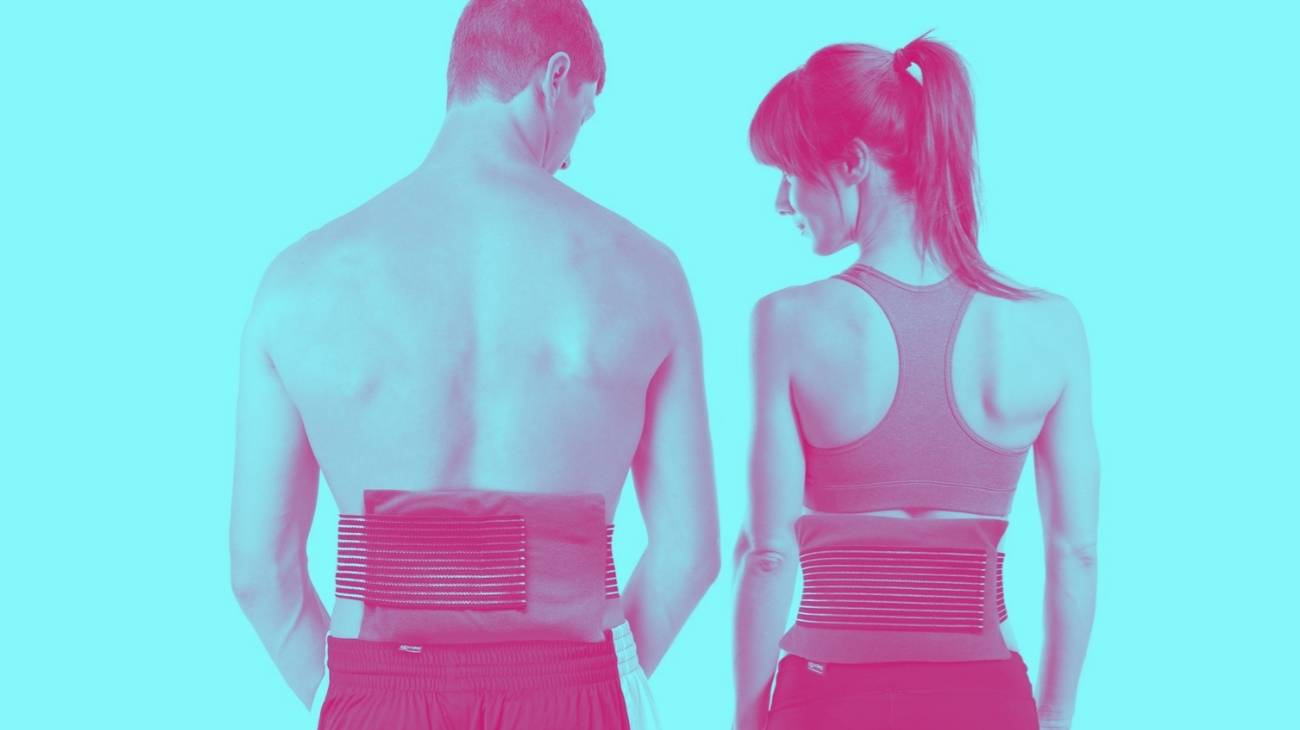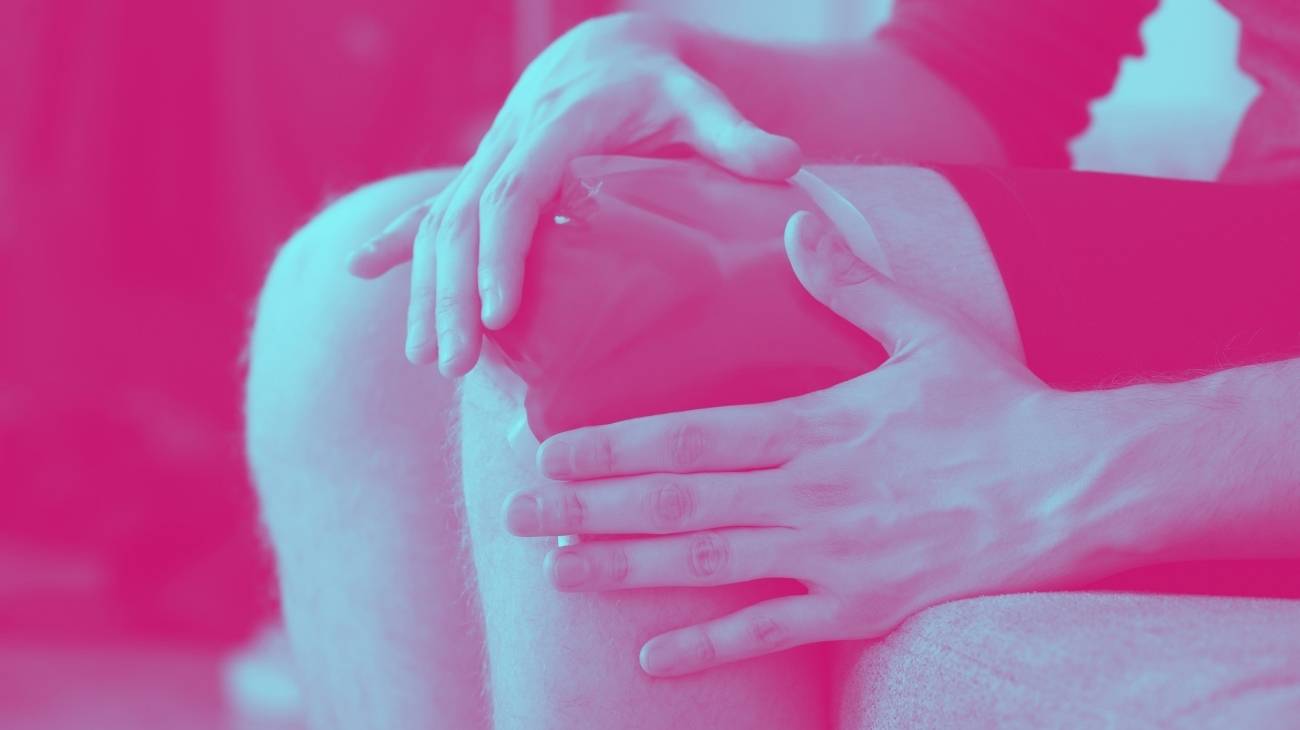- What is the best ice gel pack for sciatica pain?
- Video: How to use hot and cold gel packs?
- Types of hot & cold packs you should know about
- What are the causes of pain due to inflammation of the sciatic nerve?
- Which is more effective in relieving sciatic back pain: heat or cold?
- How do you use hot & cold gel packs to relieve inflammation of the sciatic nerve?
- The best hot and cold gel packs for pain relief
Sciatic back pain is one of the most uncomfortable pains a person can experience. Those who have suffered from it describe it as a pain that starts in the lower back and spreads to the thighs, legs and feet. It is called "sciatica" because it is caused by inflammation of the sciatic nerve, which follows the same path.
This condition has several causes and treatment should aim to correct the main cause of sciatica. However, there are simple, non-surgical solutions to relieve the pain, such as heat and cold therapies.
What is the best ice gel pack for sciatica pain?
- Size: One size fits all
- Colours: Grey and Black
- Material: Breathable
- No. of products: 1 Piece
- Uses: Rehabilitation and sport
- Always Flexible
- High Quality
- Full Pack
- Extra-Strong Velcro
- Ergonomic design
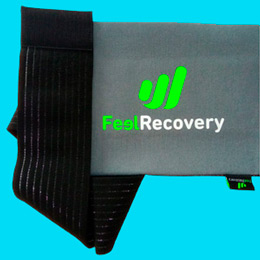
Extra-Strong Velcro
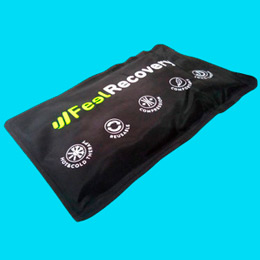
High Quality
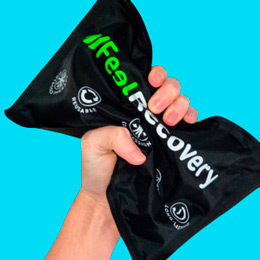
Always Flexible
- Material: Nylon
- Uses: Lower back
- Type of adjustment: Velcro strap
- Cover: Yes
- No. of units: 2 Gel Packs
- Velcro strap
- 2 Gel Packs
- Hot/cold therapy
- Fully adjustable
- Little flexibility with cold therapy
- Not microwaveable
The ice and heat packs are removable and can be placed in the refrigerator or microwave, depending on the therapeutic benefit you are looking for. The neoprene cover is flexible and does not deform during use, which helps to better adapt to the tender points in the lumbar region. Please note that, in some patients, the support was not ideal for stabilising the joint.
- Material: Nylon
- Uses: Lower back
- Type of adjustment: Velcro strap
- Cover: Yes
- No. of units: 2 Gel Packs
- Fully adjustable Velcro strap
- Durable heat/cold therapy
- Not microwaveable
You can recover faster from a herniated disc by simply placing the gel packs in the refrigerator or microwave to achieve the necessary temperature. Then, you will need to adjust the elastic strap until you feel comfortable with the compression. These steps will help to improve the dilation of the capillary vessels, but it is important to keep in mind that the support strap can cause skin irritation.
- Large size
- Gel Packs
- Long lasting cold therapy
- Suitable for various body areas
- Medium flexibility with cold therapy
- Not suitable for heat therapy
The pain from sports injuries will be reduced by using this freezer heating pad, just apply it for 15 to 20 minutes several times a day directly to the affected area. But that's not all, you can also use it on the neck and shoulder or other parts of the body to relieve pain. It does not include straps, so you cannot apply compression therapy.
- Material: Nylon
- Uses: Various body areas
- Type of adjustment: Velcro strap
- Cover: Yes
- No. of units: 2 Gel Packs
- Velcro strap adjustment
- 2 Gel packs per order
- Little flexibility when freezing
This handy pack of two hot and cold pads with adjustable straps is very easy to use because you only need to get the temperature you are looking for via the microwave or refrigerator. After that, you will have to apply it on your back and adjust the strap until you get the ideal pressure. Please note that, for some users, the temperature retention system was insufficient.
- Material: Nylon
- Uses: Back, Shoulder, Leg
- Type of adjustment: Velcro strap
- Cover: No
- No. of units: 3 Gel Packs
- Large Gel Pack
- 3 Internal Gel Packs
- Hot/cold therapy
- Suitable for various body areas
- Gently washable
- Not suitable for microwave
The adjustable and flexible structure is microwaveable and can be reused as many times as you like, but be aware that in some cases this property wears off over time. Its triple capsule adapts to the waist and hips of women and men, and can be worn over or under clothing at the gym or at work.
- For the whole body
- Long lasting cold therapy
- Little flexibility when freezing
Two important factors to emphasize are the construction with high quality materials and reusable condition, this helps to extend the time of use during each session and lengthens the life of the thermal bag. But you should note that it does not have adjustable straps, which helps to limit the use, as you will need to be lying down or sitting during each treatment. It can be used by both men and women to treat low back pain, menstrual cramps and sciatica.
- Suitable for various body areas
- Long therapy duration
- Hot/cold therapy
- High-quality workmanship
- Medium flexibility with cold therapy
- Not suitable for microwave
You can apply this treatment on various parts of the body and without relying on anyone else. You will only need to get the therapeutic temperature by placing it in the refrigerator or microwave and then place it on the sensitive lumbar areas. It is recommended for treating symptoms of sciatica, pulled muscles and inflamed discs. The material may overheat as you use it and tends to lose its temperature retention property.
Magic Gel - Reusable Hip Ice Pack Wrap for Hip Bursitis, Hip Replacement Surgery and Hip Flexor Pain
- Adjustable Velcro strap
- Cold/Heat therapy
- Little flexibility with cold therapy
Place the bag directly in the freezer for at least 2 hours and you will achieve the ideal therapeutic temperature for application to the lumbar region. The double velcro strap will provide stability and alignment of the joint, which will contribute to a more effective recovery. You can take this thermal bag everywhere you go, but be aware that the straps and buckles may be uncomfortable for some users.
Video: How to use hot and cold gel packs?
Types of hot & cold packs you should know about
What are the causes of pain due to inflammation of the sciatic nerve?
First of all, it is important to know that the term sciatica only refers to a set of painful symptoms. It does not refer to a specific disease, but to the inflammation of a nerve. This is the sciatic nerve, the longest and thickest nerve in the human body.
Clinically, sciatica is characterised by severe pain, numbness and tingling in the lower limbs. It is characterised by extending from the lumbar region to the back of the buttocks, thigh, leg and foot. The intensity of the pain can vary and is usually unilateral, i.e. it occurs on one side of the body.
Symptoms
Commonly described symptoms include the following:
- Constant pain: This manifests itself as a constant and intense pain that only occurs in one buttock or buttock area, as it is rarely present in both. This pain can be made worse by sitting, coughing or sneezing.
- Tingling or burning: Many people describe a tingling sensation throughout the leg.
- Loss of sensation: this usually occurs when the sufferer touches the back of the leg and finds that they no longer have sensation when touched.
- Muscle spasm: This is felt as a painful contraction of the leg muscles.
- Muscle weakness: if the neuritis has become a chronic problem, it can lead to muscle weakness.
Causes
The onset of sciatica back pain is usually due to several factors. However, the most common causes are:
- Herniated discs: the main cause of sciatic nerve pain. The intervertebral discs are rubbery rings that lie between the vertebrae and cushion the movements of the spine. When the disc protrudes, tears or bulges, it causes inflammation of the nerves and adjacent tissues.
- Spinal stenosis: The spinal canal, the opening through which the spinal cord passes, is narrowed. This causes compression of the sciatic nerve roots and is caused by bone spurs, herniated discs, inflammation and other causes.
- Piriformis syndrome: The name is derived from the piriformis muscle. In about 15% of the population, the sciatic nerve runs through the piriformis muscle. Cramps, trauma or overuse cause the muscle to shorten and cause compression or entrapment of the sciatic nerve.
- Trauma: Any trauma can cause direct compression of the sciatic nerve. An impact can injure the nerve pathway or break the bones of the spine and cause further compression of the nerve.
There are also risk factors that cause sciatica to occur or make the direct causes worse:
- Age-related changes: The spine undergoes age-related changes over the years. These are closely related to the activities the person has done for most of their life. Changes occur as a result of osteoarthritis, spinal and herniated discs, and scoliosis or kyphosis.
- Obesity: Being overweight increases the stress on the lumbar vertebrae and causes nerve compression.
- Work habits: Jobs or occupations that require excessive lifting or staying in awkward positions cause greater damage to the spine.
- Lack of exercise: Sitting for long periods of time or lack of exercise leads to sciatica. It is believed that the less you exercise, the weaker your back muscles become. This weakness causes instability of the vertebrae in the spine.
- Diabetes: Diabetes causes what is called peripheral neuropathy. This condition is caused by a high level of glucose in the blood, which leads to nerve damage.
Which is more effective in relieving sciatic back pain: heat or cold?
Heat and cold have been shown to be very useful for sciatic back pain. Some people have had very good results with cold in the first week. Others have chosen heat because it causes greater relaxation of muscles, ligaments and tendons.
Advantages of cold
Physiotherapists recommend the use of cold in the early stages of sciatic back pain. Cold is considered one of the best painkillers and anti-inflammatories and is therefore one of the best options.
Therefore, it is important to know its effect on the tissues and understand why it brings the following benefits:
- Anti-inflammatory effect: When there is inflammation in any part of the body, there is an increase in blood flow in response to repairing the damage. The cold creates vasoconstriction in the tissues of the lumbar spine, which leads to a reduction in blood flow. This slows the release of pro-inflammatory and reparative substances, thus preventing inflammation.
- Pain-relieving effect: Cold has the effect of reducing nerve conduction in the peripheral sensory nerves. This significantly reduces the severe pain caused by sciatica.
- Stimulates muscle function: A short application of cold stimulates muscle function and reduces osteotendinous reflexes and stiffness.
It is important to remember that the application of cold to the spine must be done with great care. Very prolonged exposure to cold should be avoided as it can lead to nervous system problems. Excessive cold slows down the speed of nerve conduction and leads to poor motor performance.
Advantages of heat
Heat also offers many benefits for sciatic back pain. By improving blood flow to the tissues, it speeds up the improvement of the tissues and pain. Like cold, it is very easy to apply.
The most notable benefits of heat or thermotherapy on the sciatic nerve include:
- Relaxing effect on muscles, ligaments and tendons: Heat causes a change in the physical properties of muscle tissue, tendons and ligaments. This means that they can relax and stretch better during the cramps that occur with sciatica.
- Pain-relieving effect: The heat causes vasodilation in the tissues, which leads to an increase in blood flow. This blood flow brings more oxygen and nutrients to the tissues, which allows for faster recovery. This significantly reduces pain.
- Resorption effect of oedema and inflammatory infiltrates: In addition to pain relief, the increased blood flow allows the diseased tissue to heal more quickly. This leads to the resorption of exudates, oedemas and inflammatory infiltrates.
The application of heat also requires care and caution. The application of compresses or gel packs should not exceed a very high temperature, i.e. they should not burn. It is very easy to notice when the temperature is exceeded, if the heat causes discomfort, it is not appropriate.
How do you use hot & cold gel packs to relieve inflammation of the sciatic nerve?
As explained above, heat and cold therapies can be used separately or alternately for sciatica. They can be applied in gel-filled sachets as this is the simplest and easiest way to apply them. Follow the recommendations below for their use:
Cold
Our gel packs are very easy to cool, follow these simple steps for proper application:
- Place in the refrigerator or freezer for at least 2 hours.
- Check the temperature of the gel pack and remove it when it is at the correct temperature.
- Apply to the lower back, avoiding direct contact with the spine and bones. Remember that direct cold on the spinal nerves can cause problems in the nervous system.
- Do 10-minute exposures every 2 hours. This should be done within the first 7 days of the onset of pain.
- Exposure times of 15 minutes every 15 minutes can also be done for up to 75 or 100 minutes. Both options of exposure time are very useful.
- Put the bag back in the freezer after the exposure time is up and wait for the new exposure time.
Hot
Heating our gel packs is very easy, provided you follow the correct timing and procedure. We would like to point out that our gel packs are not suitable for hot use, but they work very well. The easiest way to do this is in the microwave or in a water bath:
If you choose to heat the gel pack in the microwave, follow these recommendations:
- Place the gel pack in the microwave and set the power to 800 W for 30 seconds.
- After this time, remove the bag and massage it to ensure that all the gel is at the same temperature.
- If you feel it is not hot enough after massaging, put it in the microwave again for 10 seconds. If the temperature is too high, you can let it rest for a few minutes before using it.
- After the rest period, you can start exposing it for a period of 10 to 15 minutes.
- In the first 7 days after the onset of pain, exposure can be every 1-2 hours.
Hot & cold therapy
If individual therapies have not had the desired effect, contrast media can be used. For this you need two gel packs, one for cold and one for heat.
- First place the hot gel pack for about 5-8 minutes.
- Then put on the cold gel pack for about 2-4 minutes.
- Repeat these cycles for at least 20-30 minutes and leave on for 1-2 hours.
These cycles should be repeated for at least 7 days, especially if the sciatica has become chronic. Contrast therapies stimulate the cardiovascular system and the autonomic nervous system and are ideal for tissue rehabilitation. They purify and reduce swelling in the tissues so that they can recover more quickly.

